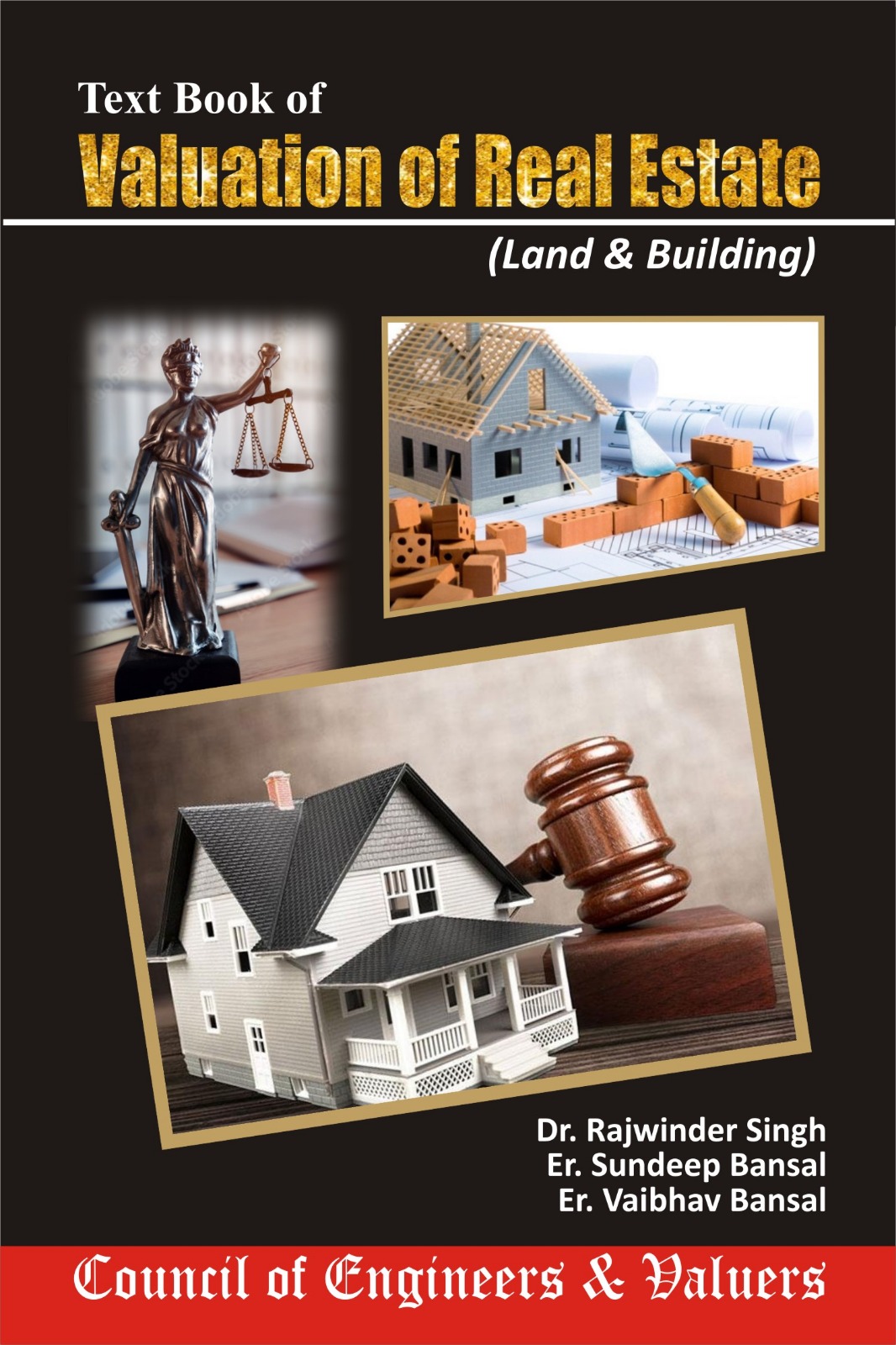ILLUSTRATIVE CAVEATS, LIMITATIONS AND DISCLAIMERS
NOT TO BE USED IN A VALUATION REPORT & DIFFICULT SITUATIONS IN THE VALUATION OF LAND AND BUILDING
i. Business Plan/forecasts received from client: RV giving a disclaimer for the business plan/forecasts received from client without applying test of reasonability and due diligence.
ii. Physical Verification: RV giving a disclaimer that he has not physically verified the tangible assets in case where engagement is for providing liquidation value.
iii. Market related data: RV giving disclaimer for the market related data employed in his reports e.g. beta, discounting factor, comparable companies, comparable transactions, valuation metrics without testing appropriateness of the same.
iv. Historical analysis: RV giving disclaimer that he has not done any historical analysis while conducting valuation exercise of listed/unlisted entities although the historical data could have been arranged with reasonable effort.
v. One approach: RV giving valuation conclusion based on only one approach without giving any reasoning as to why the other two approaches were not considered in his valuation.
vi. Another expert: RV giving disclaimer for work done by any other expert and the findings of the same does not form part of report of RV.
Understanding the Guidelines on Use of Limitations, Caveats and Disclaimers by the Registered Valuers in Valuation Reports
Insolvency and Bankruptcy Board of India having office at 7th Floor, Mayur Bhawan, New Delhi – 110001 issued Guidelines on Use of Limitations, Caveats and Disclaimers by the Registered Valuers in Valuation Reports on 1st September, 2020, Some key features are mentioned below for knowledge gain purposes of the whole fertanity & the ecosystem attached to it.
3.6. Examples specific to difficult situations in the valuation of land and building
Some examples of qualification statements which may be relevant to situations commonly encountered by RVs are provided below. These examples are designed to address limitations in the RV’s role, instructions or expertise. They may assist to draft specific disclaimer statements to address particular circumstances or reports, however, they should be used only as a guide.
i. Site Survey: RVs are generally not qualified as surveyors. The RV is often expected to state that the improvements on a property are located within the boundaries of the site. Generally, the RV is not qualified to make that certification, unless also qualified and registered as a Surveyor
ii. Survey Qualification: If a RV was not provided a report of land survey report, the RV may state that the valuation is made on the basis that there are no encroachments by or upon the property and this should be confirmed by a current survey report and/or advice from a Registered Surveyor. If any encroachments are noted subsequently by the survey report, the RV should be consulted to reassess any effect on the value stated in this report.
iii. Town Planning/Resource Management: Verbal Enquiries- In most instances a RV will only make verbal enquiries of the Local Authority or the State Planning Department as to the zoning or planning area of a property. In some locations it is not possible to obtain a ‘zoning or planning area certificate’ and obtaining written confirmation of zoning can take considerably more time than is generally available to the RV and/or the user of valuation services.
iv. Extent and Nature of Enquiries: It is, therefore, necessary to set out the extent and nature of the enquiries made in ascertaining the zoning and development requirements of the subject property. For example: Town planning information was verbally obtained from offices of the Town Planning Department, however, we recommend that this zoning or planning area should be verified by application to appropriate authority for the issue of a zoning certificate.
v. Environmental/Contamination Issues: An increased awareness of environmental issues in the community today has brought about a need for valuation report taking cognisance of environmental issues that may affect the value of a particular property at the time of reporting or at some time in the future. Those issues may include:
contamination – through petroleum or chemical products;
impact of flooding for properties adjacent to rivers/ streams or over underground water supply sources;
conservation – including rare flora and fauna species; and
title claims in case of conversion of agricultural land.
Examples- Some examples of clauses relevant to this issue include the following:
(a) Environmental Issues Our enquiries at the town planning department/authority indicate that the site has not previously been utilised for any industrial or manufacturing use or for the storage (either above ground or underground) of any chemical substance. Our verbal enquiries indicate that the town planning department/authority is unaware of the existence of any site contamination. Whilst our inspection of the site surface confirms the results of these enquiries, we have not investigated the site beneath the surface or undertaken vegetation or soil sampling.
This valuation is, therefore, subject to a satisfactory contaminated site assessment report from environmental consultants.
Or
The site is (or has been) occupied by an undertaking which, having regard to the nature of process or chemicals used or stored, has a potential to cause soil contamination. Whilst our enquiries indicate that the Town Planning Department/Authority is unaware of contamination, we recommend a site inspection by an Environmental Consultant.
(b) Petroleum products: The subject property is operated as a service station and workshop and therefore, fuels, oils and other products capable of causing contamination are used on the site as part of the operation. There are no visible signs of any pollution on the property, however, we are unable to certify that there is no contamination of the property beneath the surface of the soil.
(c) Asbestos: Inspection of the improvements showed the use of asbestos products in the building. We must point out that we are not experts in this area and therefore, in the absence of an environmental consultant’s report concerning the presence of any asbestos fibre within the subject property, this valuation is made on the assumption that there is no health risk from asbestos within the property. Should it subsequently transpire that an expert report establishes that there is an asbestos related health risk we reserve the right to review this valuation.
(d) Cost of Decontamination: The cost of removing the contaminations or environmental hazards have not been incorporated in the report. An environmental consultant’s report concerning such costs may be separately obtained. This valuation is made on the assumption that there are no such costs involved in the property.
(e) Pest Affectation: The subject property is located in an area considered susceptible to termite infestation. Inspection of the site did not reveal any apparent termite infestation. This should, however, be confirmed by a certified pest control firm.
(f) Right to Review: The right is reserved to review and, if necessary, vary, the valuation figure if any contamination or other environmental hazard is found to exist.
vi. Extent of Investigations in respect of structural integrity: It is important to highlight in the report the extent of the RV’s investigation as to the structural integrity of the building and its plant and equipment. For example:
(i) An inspection of all readily accessible parts of the property has been carried out by the RV.
(ii) The RV did not have access to a qualified engineer’s structural survey of the property, or its plant and equipment. The RV is not a building construction and/or structural expert and is, therefore, unable to certify as to structural soundness of the property. Users of the report would need to make their own enquiries in this regard. (iii) We do not have access to a structural report on the property nor have we inspected unexposed or inaccessible portions of the premises. We, therefore, cannot comment on the structural integrity, defect, or infestation of the improvements nor can we comment on any knowledge of the use in construction of material such as asbestos or other materials now considered hazardous.
vi. Tenancy Details: Extent of Investigation of Lease Details- In reporting the specific lease details of a property it is important to advise the extent of the investigation of lease documents and other supporting documentation undertaken by the RV. When the lease negotiations or preparation of documentation may not have been concluded, it is necessary to specify in the report that the valuation is subject to satisfactory conclusion of those lease negotiations and the taking on record of a stamped lease agreement by the parties. For example: This assessment of Market Value is based on the assumption that the proposed lease agreements outlined earlier in this report are all executed, signed and stamped. Upon being stamped those documents should be referred to the RV to confirm that the particulars of the document concur with those set out in this report.
vii. Valuation of under construction properties: This requires a variety of assumptions-In valuing a under construction property to assess the market value for security purposes, the RV should also take into consideration the market value when the construction is completed. Such a process requires a variety of assumptions to be made, which may include:
(a) construction and development costs;
(b) in accordance with plans and specifications at the time of valuation;
(c) the impact of existing and future competition;
(d) the level of sale prices; and
(e) in the case of income properties, the likely level of rents, the lease-up period, rental concessions and commissions, capitalisation rates, discount rates, etc.
viii. Set out in detail the assumptions made and qualifying clauses: It is, therefore, imperative that the RV undertaking valuation of an under construction property sets out in detail the assumptions made and inserts a qualifying clause in the valuation report stating that the valuation is subject to the assumptions outlined in the report, particularly where those assumptions are based on purported lease negotiations or pre-sale contracts.
These qualifying clauses could include:
(a) Satisfactory completion of the construction in accordance with the plans, specifications and details as provided.
(b) An inspection by the RV following completion of construction.
(c) Confirmation or variation of the original valuation figure relevant to the original valuation date, following an inspection of the project and any leases after completion of construction.
(d) Issue of all relevant approvals including a satisfactory building completion certificate under the appropriate legislation.
(e) Reports from other experts who have provided advice in aspects of the construction of the buildings like that on sewage and plumbing, electrical and fire safety issues etc.
(f) Such other matters/issues that the RV is of the opinion should be drawn to the attention of the user.
(g) The right to review and, if necessary, vary the valuation if there are changes in the project itself or leasing. An example of what could be stated follows: ‘The value of an under-construction property is the market value of the proposed improvements as detailed in the report on the assumption that all construction had been satisfactorily completed in all respects at the date of this report. The valuation reflects the RV’s view of the market conditions existing at the date of the report and does not purport to predict the market conditions and the value at the actual completion of the project because of time lag.
Accordingly, the ‘under construction’ valuation must be confirmed by a further inspection by the RV, initiated and instructed by the user, on completion of project. The right is reserved to review and if necessary, vary the valuation in this report if there are any changes in relation to the project itself or in property market conditions and prices’.




